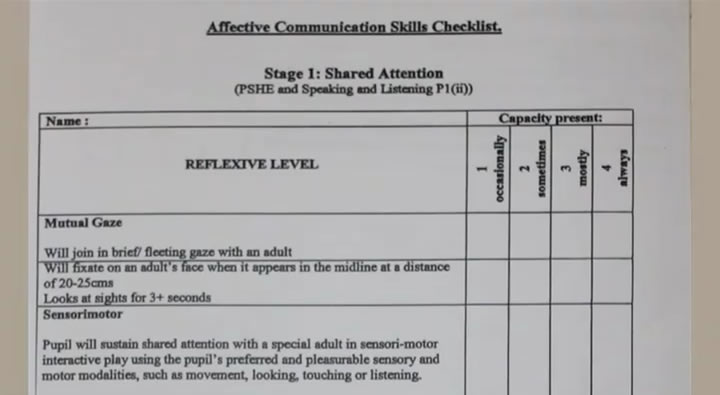
Eating and drinking is a highly complex, multi-system skill involving anatomic stability, neuromuscular control and co-ordination, sensory perception, gastrointestinal function, cardio-respiratory support and integration from the autonomic nervous system.
Royal College of Speech and Language Therapists, 2006
In this clip a teacher speaks about how interventions are set up and how useful information is gathered.
- What has this assessment told you about the child?
- What are the teaching implications of this assessment?
- What new information has been added to previous records?
Develop this and work in partnership with a colleague.
Look at the teaching implications for the assessment that you carried out. Refer to the 'Next Actions' box to guide you.
Plan a series of teaching activities that:
- Reinforce the strongest area of engagement; and
- Intervene around the weakest indicator of engagement.

Reflect on the scales as a team. This will ensure that you obtain different perspectives and ideals.
- If you are struggling to pull out details when you observe a child, film the observation. This will allow you to watch it many times and draw out the detail;
- Have another observer with you (SENCo, TA, or a therapist) so that you can compare what you have just observed.

RSCLT (2006). Communicating Quality 3: RCSLT's Guidance on Best Practice in Service Organisation and Provision, p.320. London: Scotprint.
